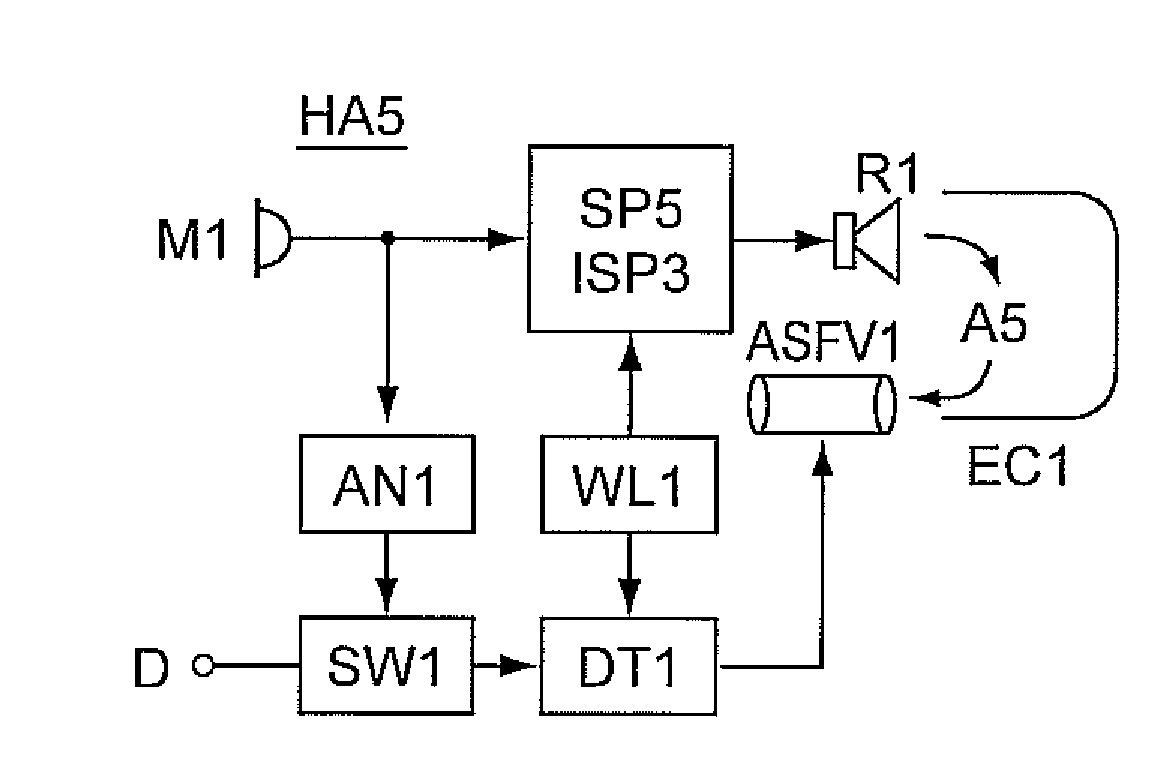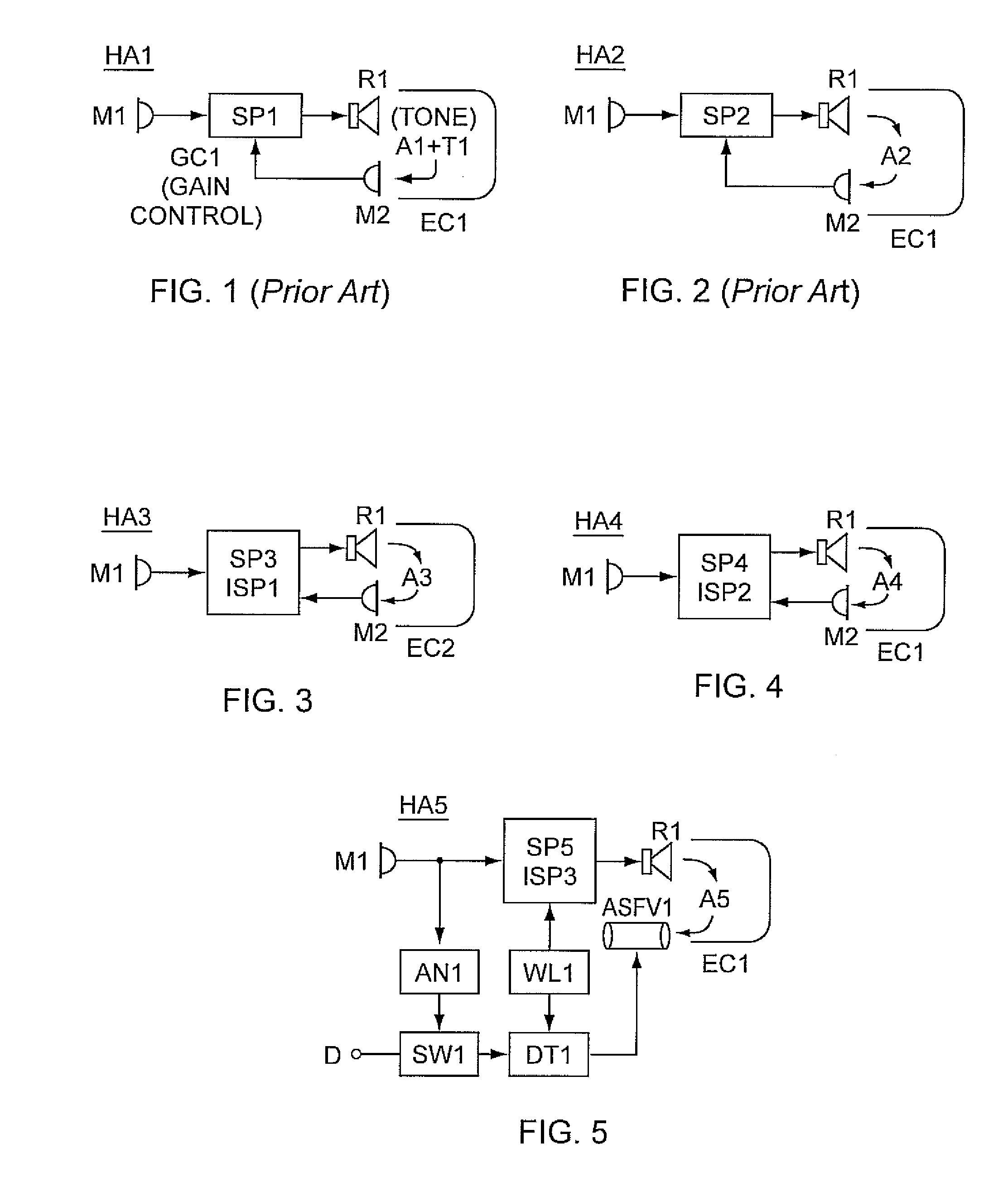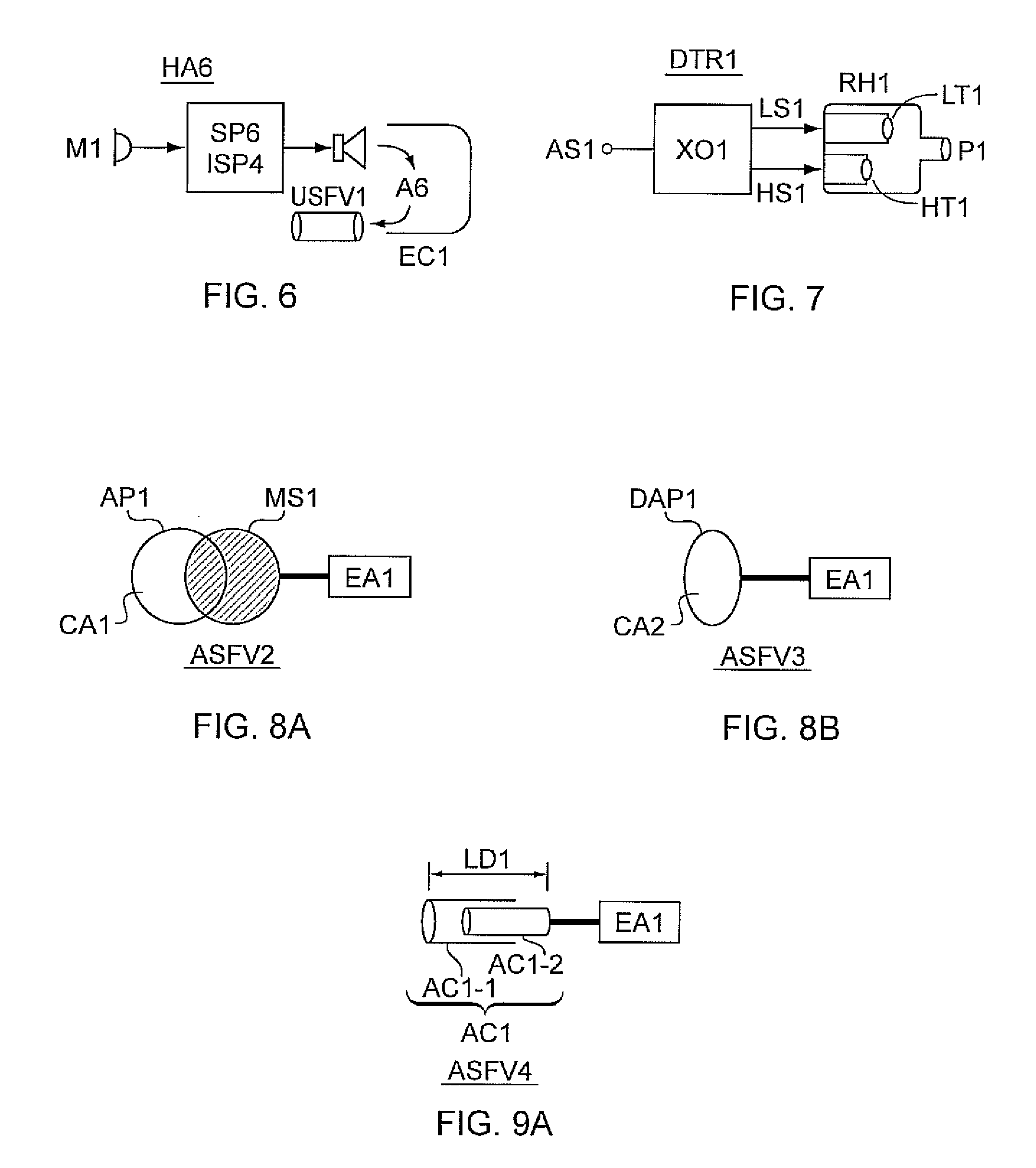Hearing aid with Anti-occlusion effect techniques and ultra-low frequency response
a hearing aid and anti-occlusion technology, applied in the field of hearing aids, can solve the problems of reducing the subjective quality of multimedia sound, affecting the quality of audiovisual sound, and affecting the quality of audiovisual sound, and avoiding exacerbating the occlusion effect. , to achieve the effect of improving acoustic output and avoiding exacerbating the occlusion
- Summary
- Abstract
- Description
- Claims
- Application Information
AI Technical Summary
Benefits of technology
Problems solved by technology
Method used
Image
Examples
Embodiment Construction
[0041]In the preferred embodiment, the hearing aid constitutes a multi-faceted improvement over prior art hearing aids and comprises occlusion effect cancellation, a primary microphone exposed to external sound and a secondary microphone exposed to air conducted sound within an ear canal, in which a signal produced by the secondary microphone is applied as phase and amplitude compensated negative feedback (meaning waveform negative feedback as opposed to gain controlling negative feedback) to an input of a signal process and amplifier driving a hearing aid receiver (transducer), whereby, it has been determined by the present inventor, the occlusion effect may be substantially canceled, and, as necessary to provide optimally natural and extended frequency response reproduction of multimedia sound and music, combinational improvements of:
[0042](1) a vent having an ultra-low Helmholtz resonant frequency of substantially 40 Hz, thereby facilitating substantial acoustic generation of low...
PUM
 Login to View More
Login to View More Abstract
Description
Claims
Application Information
 Login to View More
Login to View More - R&D
- Intellectual Property
- Life Sciences
- Materials
- Tech Scout
- Unparalleled Data Quality
- Higher Quality Content
- 60% Fewer Hallucinations
Browse by: Latest US Patents, China's latest patents, Technical Efficacy Thesaurus, Application Domain, Technology Topic, Popular Technical Reports.
© 2025 PatSnap. All rights reserved.Legal|Privacy policy|Modern Slavery Act Transparency Statement|Sitemap|About US| Contact US: help@patsnap.com



